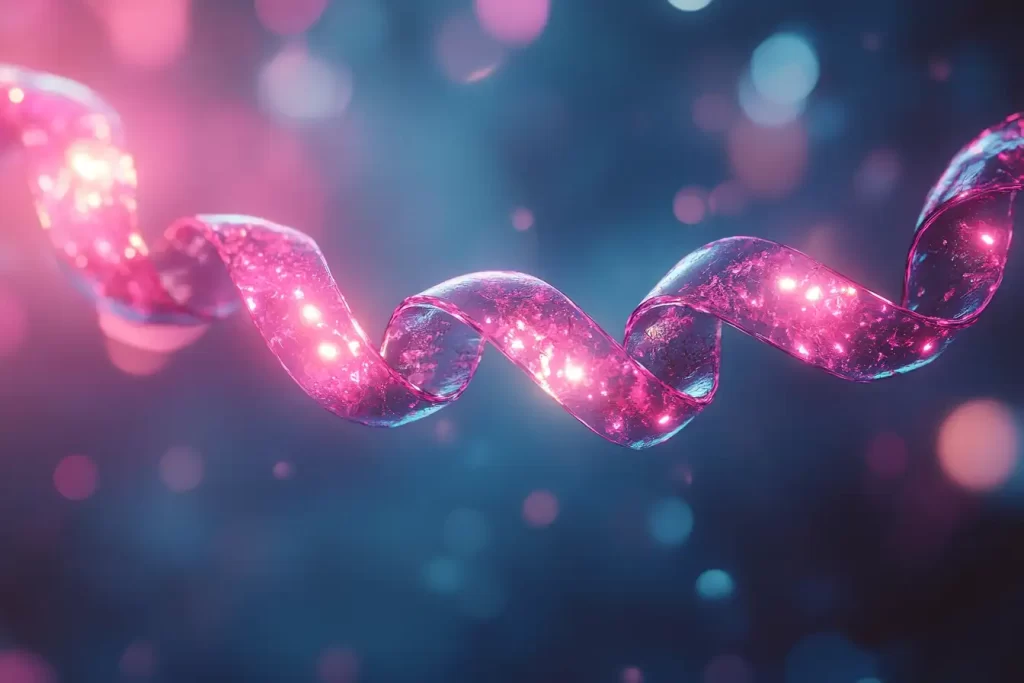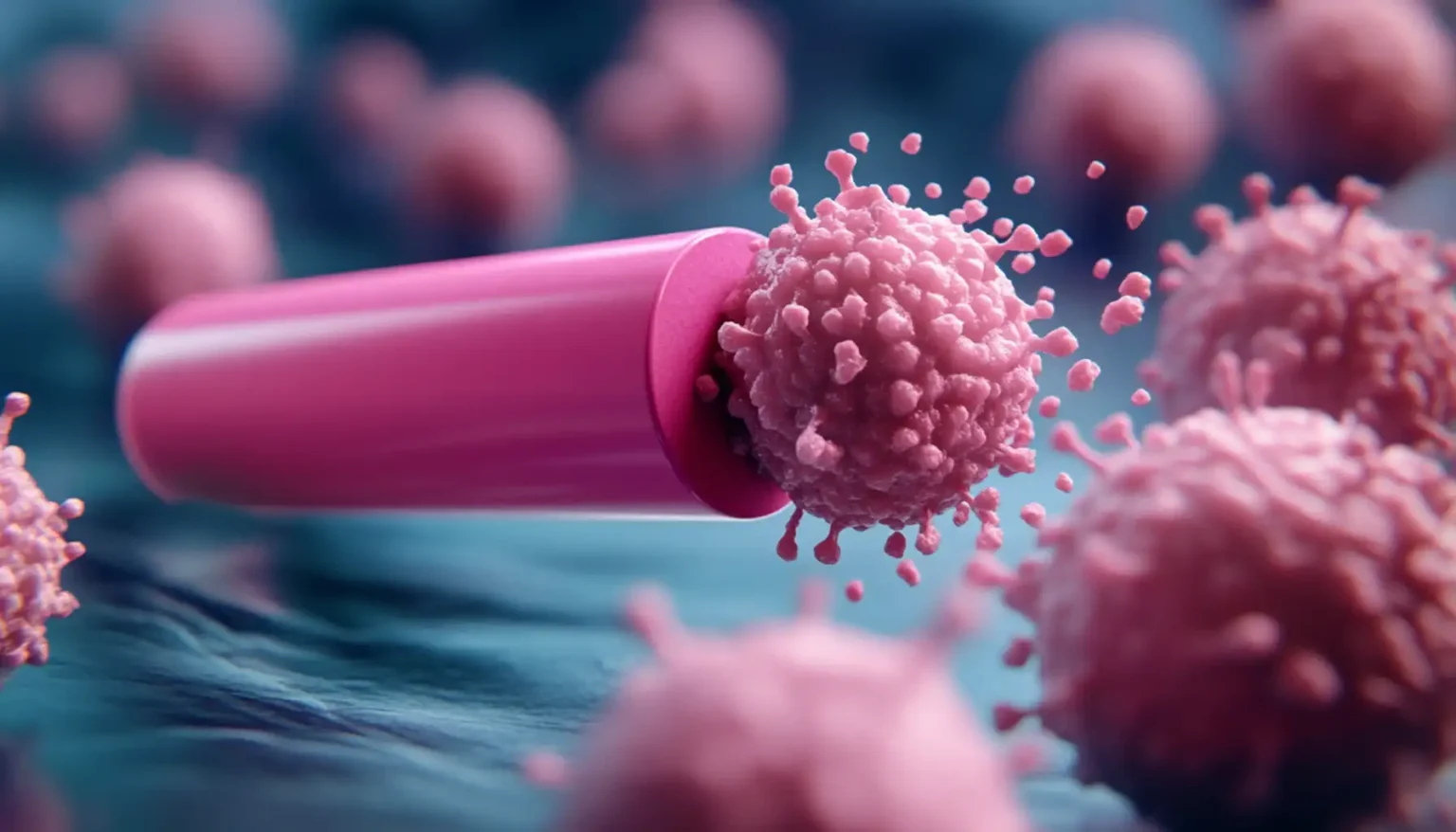Breast cancer research has made extraordinary strides over the years, improving detection methods, treatment options, and survival rates. However, one of the most groundbreaking developments in recent years is the concept of a breast cancer vaccine designed to prevent or reduce the risk of cancer recurrence. Among these innovations, the Pink Eraser Breast Cancer Vaccine stands out as a beacon of hope, offering a new line of defense through cutting-edge immunotherapy. This revolutionary approach holds the potential to “erase” the threat of breast cancer by empowering the immune system to identify and eliminate cancer cells before they can return.
A Persistent Challenge: Recurrence in Breast Cancer Survivors
Despite advancements in breast cancer treatment, recurrence remains a daunting concern for many survivors. Even after successful treatment, the possibility that cancer may return is a source of anxiety and fear. Millions of women worldwide face this uncertainty, especially those who are considered high-risk due to genetic factors, family history, or the specific characteristics of their original cancer diagnosis. The introduction of a vaccine specifically designed to prevent recurrence addresses this challenge head-on, offering the potential for long-term protection and peace of mind.
The Promise of Immunotherapy: How the Vaccine Works
The Pink Eraser Breast Cancer Vaccine leverages the power of immunotherapy, a type of treatment that harnesses the body’s own immune system to fight diseases. Unlike traditional treatments such as chemotherapy, which targets cancer cells directly but can harm healthy cells in the process, immunotherapy works by “training” the immune system to recognize and destroy cancer cells. This means the body can continue to protect itself long after the vaccine is administered, potentially reducing the chances of breast cancer recurrence.
Why the Pink Eraser Concept Is Revolutionary
The term “Pink Eraser” is a powerful metaphor that reflects both the hope and the function of this vaccine. The color pink is universally recognized as the symbol of breast cancer awareness, while the eraser symbolizes the act of removing or eliminating a threat—in this case, the risk of breast cancer returning. This combination of symbolism and scientific innovation captures the essence of a future where survivors no longer have to live in fear of recurrence. The idea that a vaccine could “erase” the likelihood of breast cancer returning is nothing short of revolutionary.
What This Breakthrough Means for the Future
The potential implications of the Pink Eraser Breast Cancer Vaccine extend far beyond individual patients. If successful, this vaccine could:
- Transform Cancer Prevention: Shift the focus from treating cancer to preventing it altogether.
- Enhance Survival Rates: Reduce recurrence, improving long-term survival and quality of life for millions of women.
- Provide Peace of Mind: Offer a new level of confidence and hope for breast cancer survivors and their families.
This guide will delve deeper into the Pink Eraser Breast Cancer Vaccine—exploring how it works, the science behind it, who it may benefit, and the challenges that remain. As we stand on the cusp of a new era in cancer prevention, understanding this vaccine’s potential is crucial for anyone touched by breast cancer. Together, let’s explore the hope and promise that this groundbreaking innovation represents. 🌸
What Is the Pink Eraser Breast Cancer Vaccine?
The Concept Behind the Name
The term “Pink Eraser” symbolizes the idea of erasing cancer cells, much like how a pink eraser removes pencil marks. The pink color is universally associated with breast cancer awareness, while the eraser metaphor signifies eliminating the risk of recurrence or development of the disease.
How the Vaccine Works
The Pink Eraser Breast Cancer Vaccine functions by stimulating the body’s immune system to recognize and destroy breast cancer cells. Unlike traditional treatments like chemotherapy and radiation, which target existing cancer, this vaccine is designed to prevent recurrence by teaching the immune system to stay vigilant against cancer cells.
Key Ingredients and Mechanisms
- Targeted Antigens: The vaccine identifies specific proteins on breast cancer cells and trains the immune system to attack these proteins.
- Immune Activation: It boosts the production of T-cells (white blood cells) that can detect and destroy cancer cells.
- Long-Term Protection: By “remembering” these proteins, the immune system can continue to protect the body against breast cancer recurrence.

The Science of Immunotherapy and Cancer Vaccines
What Is Immunotherapy?
Immunotherapy is a type of cancer treatment that uses the body’s own immune system to fight cancer. Unlike traditional therapies, which can harm healthy cells along with cancerous ones, immunotherapy is more targeted and often has fewer side effects.
How Breast Cancer Vaccines Differ from Traditional Treatments
- Preventive vs. Reactive: Vaccines are designed to prevent cancer recurrence rather than treat an existing tumor.
- Fewer Side Effects: Immunotherapy aims to enhance natural immune responses without damaging healthy tissue.
- Personalized Medicine: These vaccines can be tailored to target specific cancer markers unique to each patient.
Clinical Trials and Research Behind the Vaccine
Leading Studies and Institutions
The development of the Pink Eraser Breast Cancer Vaccine represents one of the most promising breakthroughs in the fight against breast cancer. This revolutionary vaccine has the potential to prevent recurrence by leveraging the body’s own immune system. Behind this groundbreaking advancement lies rigorous scientific research and clinical trials conducted by some of the world’s most respected medical institutions. Let’s take a deeper look at the key studies, the promising results, and what these findings mean for the future of breast cancer prevention.
Leading Studies and Renowned Institutions
The journey toward a viable breast cancer vaccine has been driven by the relentless efforts of top-tier research institutions and scientists dedicated to finding more effective ways to combat cancer. Among the leaders in this field are:
- The Cleveland Clinic:
One of the foremost institutions pioneering research into cancer immunotherapy. Their breast cancer vaccine trials focus on stimulating the immune system to recognize and destroy cancer cells, particularly for high-risk patients and those who have already undergone treatment. - Mayo Clinic and MD Anderson Cancer Center:
These renowned cancer research centers are also exploring similar immunotherapy approaches, contributing invaluable data and insights into the development of breast cancer vaccines. - National Cancer Institute (NCI):
The NCI supports ongoing research and clinical trials, providing resources and funding to advance the understanding of how vaccines can be used to prevent cancer recurrence.
These institutions are collaborating on a global scale, sharing findings and refining the vaccine’s development to ensure it is safe, effective, and accessible.

Results and Promising Outcomes
Clinical trials for the Pink Eraser Breast Cancer Vaccine are still in progress, but the preliminary results offer a beacon of hope for breast cancer survivors and those at high risk. Here are some of the most encouraging findings to date:
1. Reduced Recurrence Rates
- One of the primary goals of the vaccine is to prevent breast cancer from returning after initial treatment.
- Early data suggests that patients who received the vaccine experienced a significant reduction in recurrence rates compared to those who did not. This is particularly important for survivors who live with the constant fear of cancer returning.
2. Strong Immune System Response
- The vaccine is designed to stimulate the body’s T-cells (a type of white blood cell) to recognize and attack breast cancer cells.
- Clinical trials have shown that vaccinated participants develop a robust immune response to the specific proteins found on breast cancer cells. This means their immune systems are better equipped to detect and eliminate any remaining or recurring cancer cells.
3. Safety and Tolerability
- Compared to traditional cancer treatments like chemotherapy or radiation, the Pink Eraser Vaccine has demonstrated fewer side effects.
- Participants have reported mild side effects such as fatigue, low-grade fever, and soreness at the injection site—similar to reactions from standard vaccines.
- This favorable safety profile makes the vaccine a promising option for patients who may not tolerate more aggressive treatments.
4. Potential for Long-Term Protection
- Unlike treatments that only target existing cancer cells, this vaccine aims to provide ongoing immune surveillance.
- By “training” the immune system to recognize cancer markers, the vaccine may offer long-lasting protection against recurrence. This approach transforms cancer treatment from reactive to proactive prevention.
The Road Ahead: What’s Next for Research?
While the early results are promising, researchers continue to explore ways to improve the vaccine’s efficacy and expand its use. The next phases of clinical trials will focus on:
- Larger Participant Groups:
Expanding the trials to include more diverse populations to confirm the vaccine’s effectiveness across different demographics. - Combining Therapies:
Studying how the vaccine interacts with other treatments, such as chemotherapy, hormone therapy, or targeted therapy, to create a comprehensive prevention strategy. - Personalized Vaccines:
Developing vaccines tailored to an individual’s genetic profile or specific type of breast cancer to enhance precision and effectiveness. - Accessibility and Distribution:
Ensuring that once the vaccine is approved, it is widely accessible and affordable for patients who need it most.
A Glimpse of Hope for Breast Cancer Prevention
The Pink Eraser Breast Cancer Vaccine is more than just a scientific achievement—it represents hope, resilience, and the possibility of a future free from the fear of recurrence. By continuing to support research and raising awareness, we can help accelerate the development of this life-changing vaccine and bring it one step closer to reality for millions of women worldwide.
This breakthrough could transform how we approach breast cancer, shifting from treating the disease to preventing it altogether. 🌸
Who Can Benefit from the Pink Eraser Breast Cancer Vaccine?
The Pink Eraser Breast Cancer Vaccine represents a beacon of hope, not just for the general population, but particularly for those who face an elevated risk of breast cancer. By leveraging the body’s immune system to recognize and destroy cancer cells, this groundbreaking vaccine offers a new level of protection and peace of mind. Let’s explore in detail the two primary groups who stand to benefit the most: high-risk individuals and breast cancer survivors.
🌸 High-Risk Individuals: Proactive Protection Against Breast Cancer
For women who fall into high-risk categories, the possibility of developing breast cancer can be a constant worry. The Pink Eraser Breast Cancer Vaccine aims to provide preventive immunity, significantly reducing the likelihood of cancer developing in the first place. Here’s a deeper look at who these high-risk individuals are and how the vaccine can help:
1. Women with Genetic Mutations (BRCA1 or BRCA2)
- Genetic predispositions such as BRCA1 or BRCA2 mutations dramatically increase the risk of breast cancer. Women with these mutations face up to an 85% lifetime risk of developing breast cancer.
- The vaccine could offer a proactive defense by training the immune system to detect and eliminate potential cancer cells before they become a threat.
- For these individuals, the vaccine could be a game-changing alternative or supplement to risk-reducing surgeries like mastectomies.
2. Family History of Breast Cancer
- Women with a strong family history of breast cancer are at a significantly higher risk, even if they do not carry specific genetic mutations.
- Having close relatives (mother, sister, grandmother) who have been diagnosed with breast cancer can increase one’s risk by double or more.
- The vaccine could provide a layer of protection and reassurance by reducing the risk of developing cancer, empowering women with a preventive tool that aligns with their unique risk profile.
3. Women with Dense Breast Tissue
- Dense breast tissue can make it harder to detect cancer through mammograms and may also increase the risk of breast cancer.
- The vaccine offers a proactive approach for these women, addressing the potential for undetected cancer cells to develop and spread.
4. Women Exposed to Environmental Risk Factors
- Environmental and lifestyle factors such as exposure to radiation, pollutants, and hormone therapy can elevate breast cancer risk.
- The vaccine could provide additional protection by helping the immune system counteract these external threats, reducing the impact of environmental risks.
🌟 Breast Cancer Survivors: Preventing Recurrence and Restoring Peace of Mind
For those who have successfully completed breast cancer treatment, the fear of recurrence is a constant concern. The Pink Eraser Breast Cancer Vaccine offers a proactive way to minimize this risk and provide long-term peace of mind. Here’s how the vaccine could benefit survivors:
1. Reducing the Risk of Recurrence
- After treatment, some cancer cells may remain dormant in the body, posing a risk of recurrence.
- The vaccine helps the immune system identify and destroy these lingering cancer cells before they can grow and spread again.
- Early clinical trials suggest that vaccinated survivors experience a significantly lower recurrence rate, offering renewed hope for lasting remission.
2. Enhancing Long-Term Survival Rates
- By reducing the chances of cancer returning, the vaccine contributes to improved long-term survival outcomes.
- Survivors can focus on rebuilding their lives without the constant worry of a relapse overshadowing their recovery journey.
3. Providing Emotional and Psychological Relief
- The psychological toll of living with the fear of recurrence can be overwhelming. Anxiety, stress, and hyper-vigilance about symptoms are common among survivors.
- The Pink Eraser Vaccine offers a sense of control and empowerment, allowing survivors to feel more secure about their health and future.
- This emotional relief can significantly enhance quality of life, promoting mental well-being alongside physical health.
4. Complementing Existing Treatments
- The vaccine can be used alongside traditional therapies like hormone treatments, radiation, or chemotherapy.
- It provides an additional layer of defense, enhancing the body’s ability to ward off cancer even after the completion of standard treatments.
💖 A Personalized Path to Prevention
The Pink Eraser Breast Cancer Vaccine embodies the future of personalized medicine. It addresses the unique risks faced by individuals based on their genetics, medical history, and personal health profiles. This tailored approach means that:
- High-risk women can take proactive steps to protect themselves before cancer strikes.
- Survivors can enjoy greater peace of mind, knowing that their bodies are armed with an extra layer of defense.
As research continues and the vaccine becomes more widely available, its potential to transform the landscape of breast cancer prevention and treatment becomes even clearer. 🌸
Knowledge is power. By understanding who can benefit from this vaccine, we can make informed decisions and take proactive steps to protect our health and the health of those we love.

Challenges and Limitations of the Vaccine
While the Pink Eraser Breast Cancer Vaccine holds promise, it also faces several challenges:
- Research Stage: The vaccine is still in clinical trials and not yet widely available.
- Potential Side Effects: Some participants may experience immune responses, such as fatigue or mild inflammation.
- Accessibility: Once approved, factors like cost, availability, and distribution could affect how quickly it reaches those in need.
The Future of Breast Cancer Vaccines
What’s Next for Immunotherapy Research?
Researchers are continuously exploring new ways to make breast cancer vaccines more effective. Upcoming trials will focus on:
- Combining Vaccines with Other Treatments: Exploring how vaccines work alongside chemotherapy or radiation.
- Personalized Approaches: Tailoring vaccines to individual genetic profiles for maximum effectiveness.
How You Can Support Research Efforts
Supporting breast cancer research through donations, awareness campaigns, or participation in clinical trials helps accelerate the development of these life-saving vaccines.
Frequently Asked Questions (FAQs)
1. What is the Pink Eraser Breast Cancer Vaccine?
It is an experimental vaccine designed to prevent breast cancer recurrence by activating the immune system to target cancer cells.
2. How does the vaccine work?
It trains the immune system to recognize and destroy proteins associated with breast cancer cells, reducing the risk of recurrence.
3. Who is eligible for the vaccine?
Women at high risk of breast cancer and survivors who want to prevent recurrence may benefit the most.
4. Is the vaccine currently available?
The vaccine is still in clinical trials and not yet available to the general public.
5. Are there any side effects?
Initial trials show mild side effects like fatigue or inflammation, but more research is needed to fully understand long-term effects.
Conclusion
The Pink Eraser Breast Cancer Vaccine represents a monumental step forward in the fight against breast cancer. By harnessing the power of the immune system, this breakthrough offers hope for preventing recurrence and protecting high-risk individuals. While challenges remain, the potential of this vaccine to “erase” breast cancer from the lives of millions is an inspiring vision for the future.
Stay informed, support breast cancer research, and spread awareness. Together, we can work toward a future free from breast cancer. 🌸

